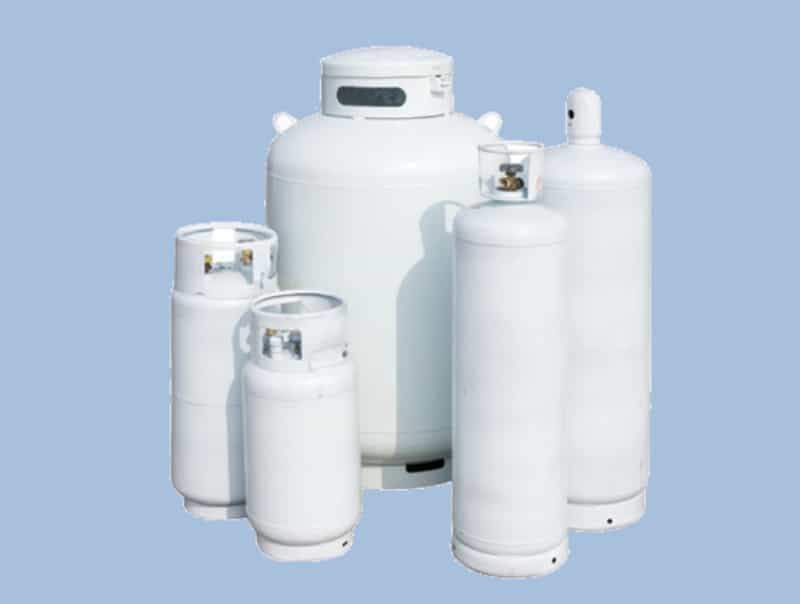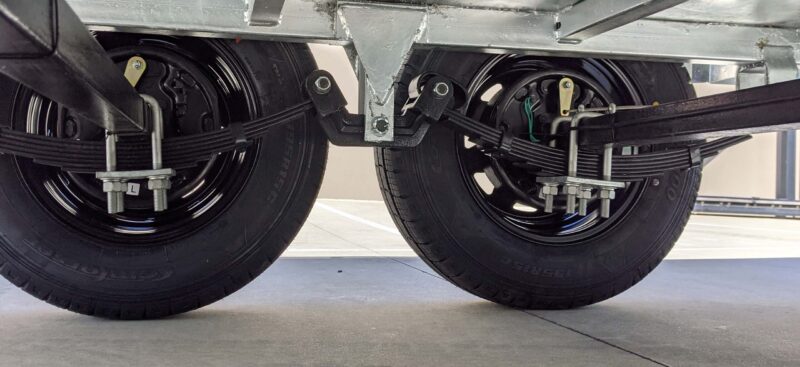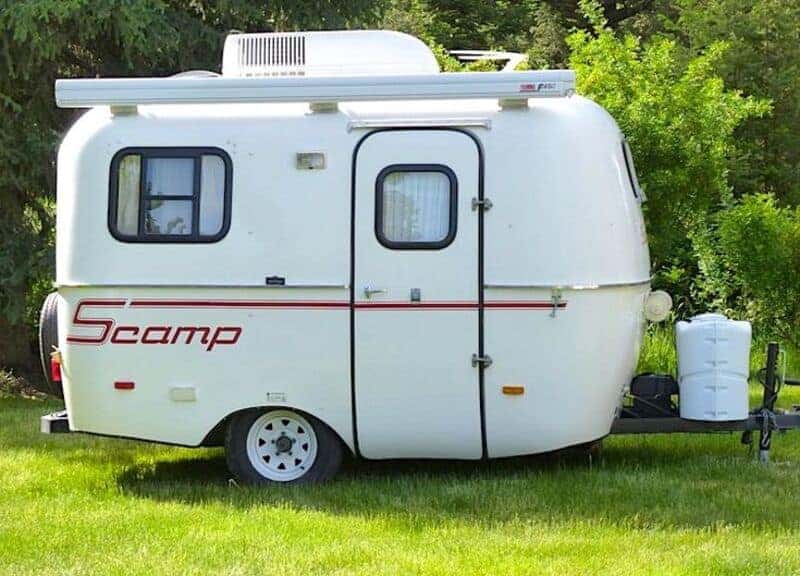When you are new to RV life, there are many new things to learn. The best-size RV propane tank for your camper or travel trailer is one of the most important things you need to know.
Propane (LP) is one of the essential energy sources used to power various appliances in your RV. In this article, we’ll show you the importance of having the proper RV propane tank size for your particular coach, their weights, the best way to refill LP bottles, and the best way to transport removable-sized RV propane tanks.
What’s the Standard Size for Propane Tanks on a Camper?
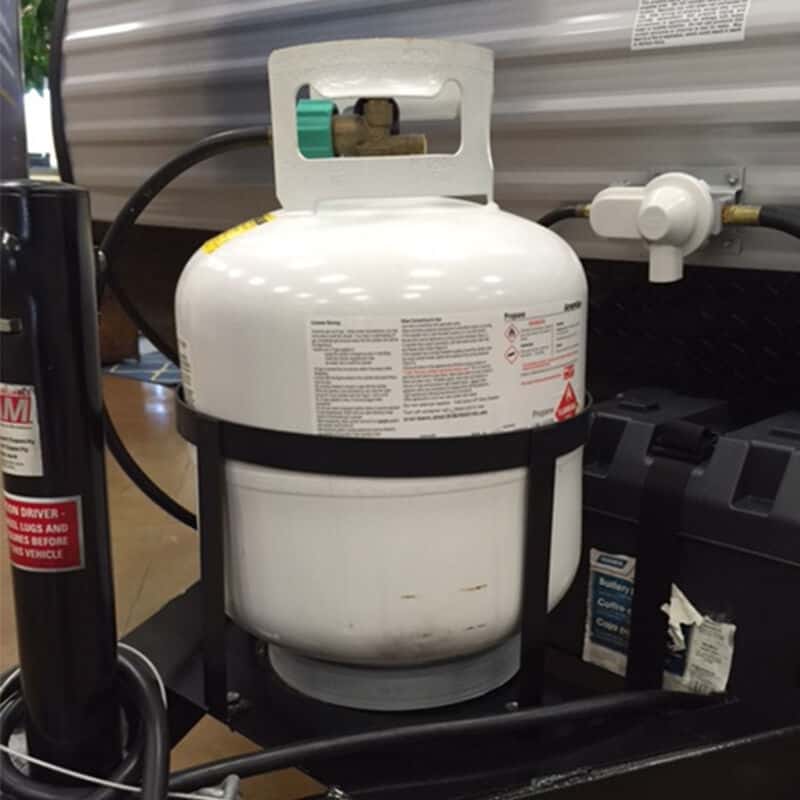
Most use standard-size RV propane tanks, which is a 20-pound propane tank. 20-pound propane tanks are the size that you can find at your local grocery store or Wal-Mart for exchange.
Some RV manufacturers and towable categories use 30-pound LP tank sizes. However, small campers like pop-ups and teardrops may use RV propane tank sizes as small as 5 to 10 pounds.
Generally, all RVs with propane features come with LP tanks, but if you need to replace one, the previous owner decided to keep it, or for any other reason, choosing the correct RV propane tank size is important.
Before shopping for the right RV propane tank size for your rig, you’ll want to know which one is best for your RV. There isn’t a lot of variation in propane tank size for RVs and campers. Therefore, a standard-size propane tank is a safe bet for most RVs and campers.
Are RV Propane Tanks Different?
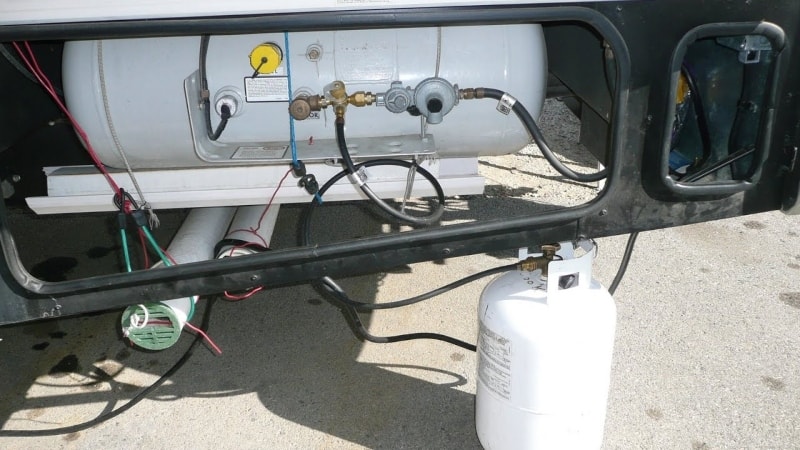
RVs and campers use either an ASME tank or a DOT cylinder. The type you choose depends on the type of RV or camper that you have.
ASME RV Propane Tank
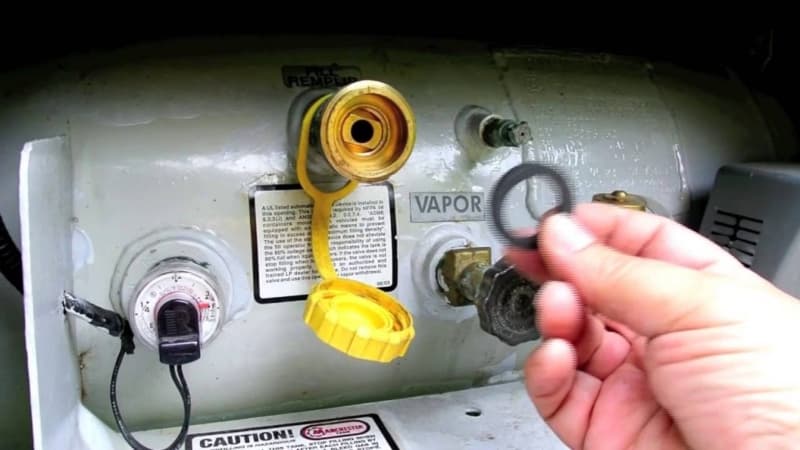
ASME RV propane tanks are permanently mounted tanks most frequently found on larger travel trailers or motorhomes. These tanks are a higher capacity than removable cylinders. ASME tanks are ideal for longer trips. Filling an ASME tank requires that you visit a propane filling station instead of swapping out the tank.
DOT Cylinder RV Propane Tank
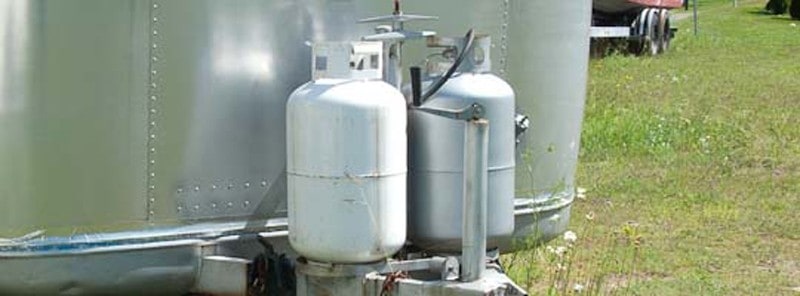
DOT cylinder RV propane tanks are removable tanks that are most commonly used on smaller campers and towed travel trailers. They are the same kind of cylinders that you would use on your gas grill or propane fire pit.
How Do I Know What Type of Propane Tank My RV Has?
The best way to know your RV’s propane tank size is to consider where the tank is mounted. If the propane tank is mounted underneath or inside the RV, your RV has an ASME tank.
Travel trailers and small towable campers will normally have the propane tank mounted on the front of the trailer. This location allows you to install removable DOT cylinders. In addition, fifth wheels and some camper vans have designated bays for the LP bottles.
How Do I Know What Size RV Propane Tank I Have?
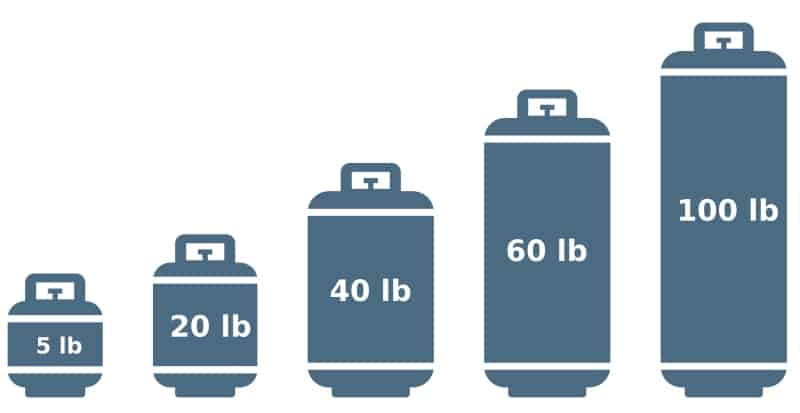
If your RV has an ASME propane tank, the easiest way to determine the size is to check your owner’s manual. Your owner’s manual will provide information about the RV propane tank size. This’ll include the capacity of the tank in both weight and volume.
If your RV or camper uses DOT cylinders, there are a to determine the propane tank size.
- Read the owner’s manual: If your RV or camper came with a tank, the owner’s manual is a great place to find that information.
- Have your tank filled: If you take the tank to a filling station, you will be provided with the capacity in weight for your tank.
- Measure the tank: DOT cylinder tanks come in standard sizes for each volume. To find the size, measure the tank’s height and diameter. Then, use a reference table to determine the size of your RV propane tank.
How Do You Calculate How Much Propane You’ll Need for Your RV?
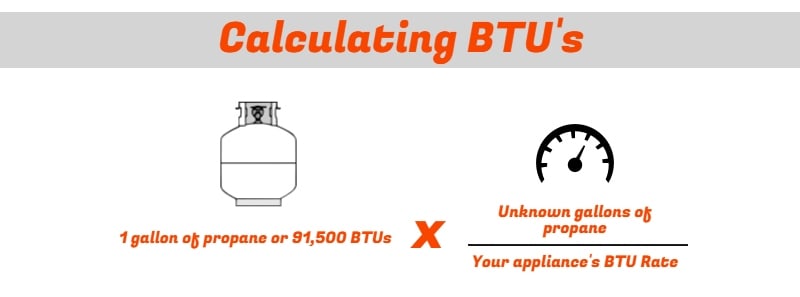
To determine how much propane you will need for your RV, you’ll need to do some math.
First, you’ll need to calculate how many British Thermal Units (BTUs) are available in your filled propane tank. You can calculate this number using either gallons or pounds of propane. Then, multiply the volume or weight of the tank by the proper BTU value.
- One gallon of propane = 91,502 BTUs
- One pound of propane = 21,548 BTUs
Next, add together the hourly demand from all the appliances in your RV. Finally, divide the tank’s total available BTUs by your RV’s hourly demand. This number will be the number of hours that you can run your RV’s appliances using the DOT cylinder or ASME tank on your RV or camper.
(sum of hourly demand of appliances) / (total BTUs of LP)= number of hours running your LP appliances
How Much Propane Does My RV Furnace Use?
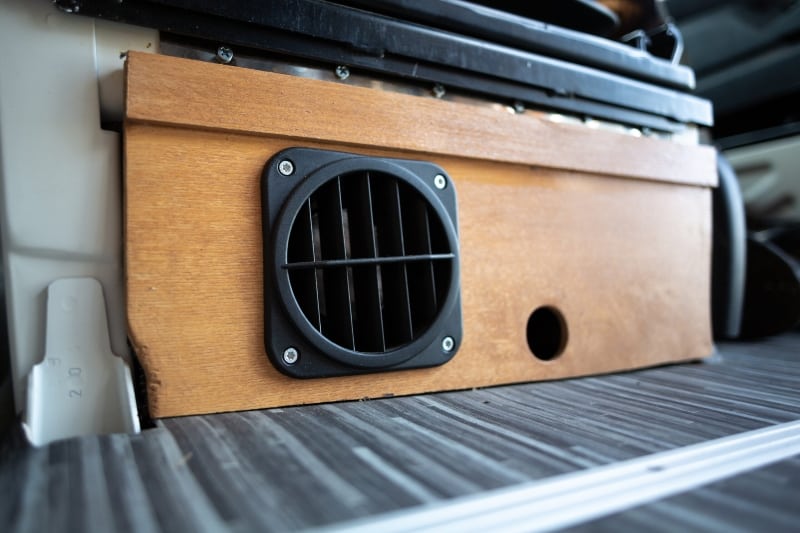
The amount of propane that your RV furnace uses will depend on the size of the furnace. Most RVs come with a furnace that is rated at around 30,000 BTUs.
One gallon of propane provides 91,502 BTUs of power. A standard RV furnace should use about one-third of a gallon of propane in an hour or a full gallon every three hours.
Be aware that the efficiency of your RV furnace will change as it ages or if it’s not maintained correctly. This may mean your furnace will use more propane the older it gets or if it isn’t well maintained.
How Long Will a 20lb Propane Tank Last in an RV?
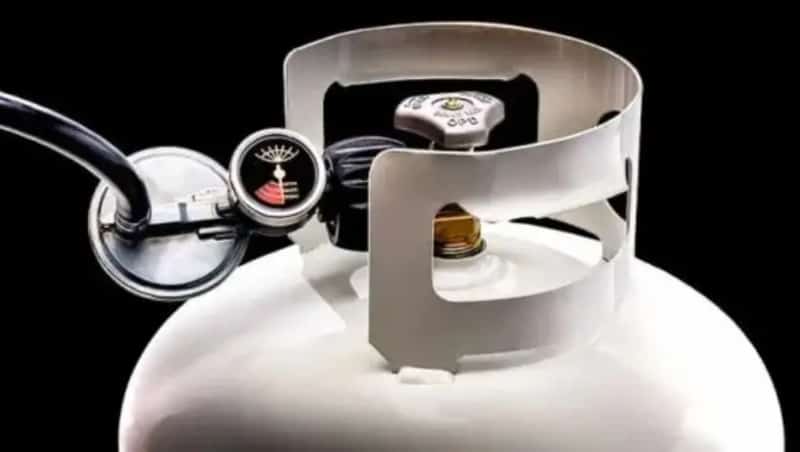
To accurately determine how long a 20-pound propane tank will last in your RV, you must calculate how many BTUs each appliance requires. Generally, one pound of propane will burn for 21 hours if the use rate is 1,000 BTUs.
If you have a 20-pound propane tank, you can expect it to last for 420 hours based on a 1,000 BTU demand. As demand increases, the faster the tank will empty. Also, propane bottles are considered “filled” at 80% capacity. This allows for expansion due to heat conditions. Therefore, a 20-pound tank has 16 pounds of LP.
How Long Will a 30lb Propane Tank Last in an RV?
Using the same basic information we used for the 20-pound calculations, we can figure out how long a 30-pound propane tank lasts.
If one pound of propane lasts for 21 hours at 1,000 BTUs, then a 30-pound propane tank should last 630 hours at the same 1000 BTUs with 24 pounds of LP.
How Long Will a 20 Gallon Propane Tank Last in an RV?
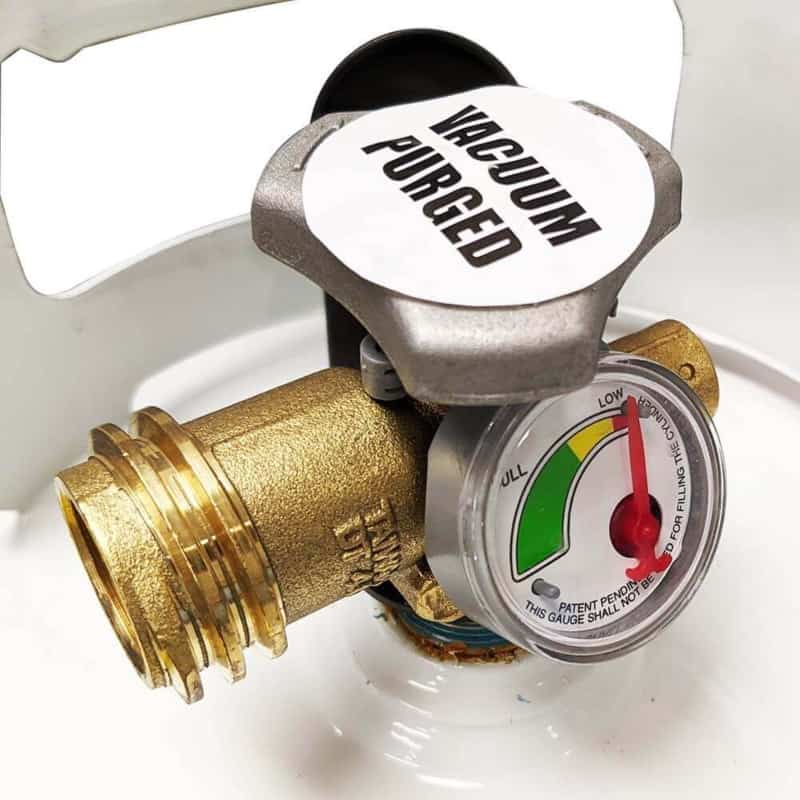
If you want to determine the run time for your ASME tank, you’ll need to calculate the rate based on gallons instead of pounds. One gallon of propane at a 1,000 BTU demand can last for 91 hours.
If your ASME tank is rated for 20 gallons, actually holding 80% of that, at the 1,000 BTU demand, your propane tank will last 1,820 hours. Just remember, this number goes down as your RV BTU demand increases.
How Much Do RV Propane Tanks Cost?
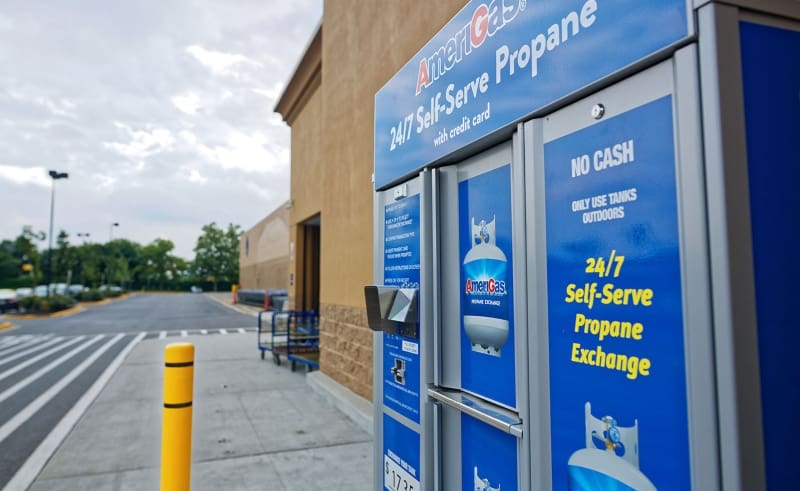
Your price for an RV propane tank depends on the size. The larger the tank size, the higher the price. You’ll also tend to pay more for ASME tanks, which require additional parts to mount to your RV frame.
For the standard 20-pound DOT propane cylinder, you can expect to spend over $100. ASME tanks start at around $1,000 and increase in price depending on the size of the tank and the types of fittings needed.
How Much Does It Cost to Refill an RV Propane Tank?
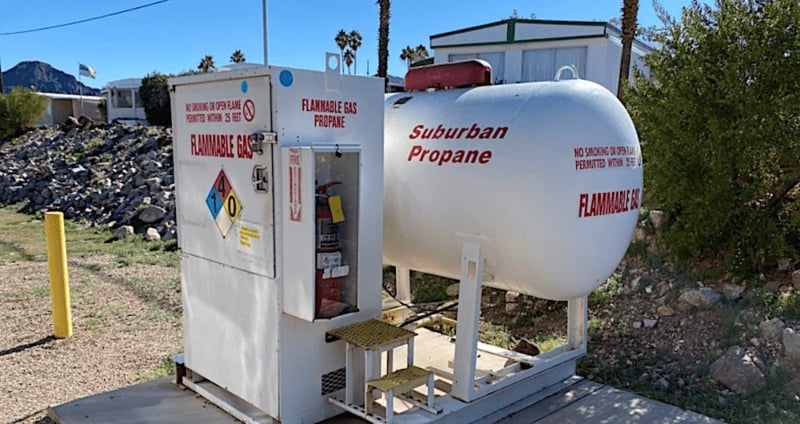
Propane is a commodity much like gasoline. The price per pound is based on the set market rate. Over the last few years, propane has generally been sold between $2-$3 a gallon. As with gasoline, the propane price includes state and federal taxes.
The price to fill your propane tank will depend on the size of the tank and how much propane is needed for a complete fill.
Is It Cheaper to Fill or Exchange Propane?
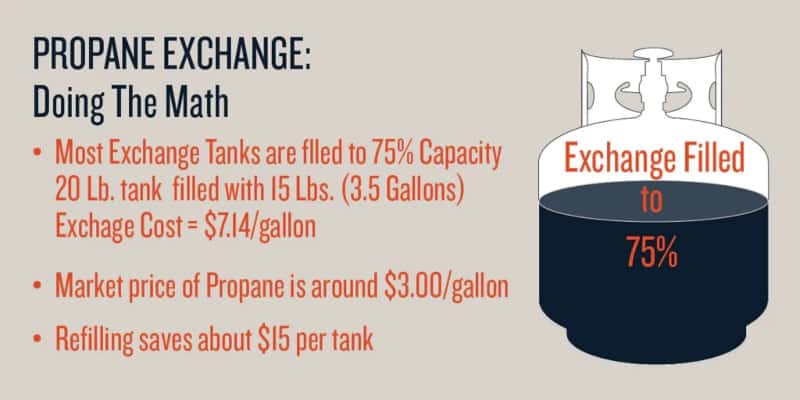
If you don’t have a propane filling station near where you’re staying with your RV or camper, you may wonder if it’s a good idea to exchange your propane tank instead of waiting to have it filled. Usually, it’s cheaper to have your propane tank filled than a tank exchange.
Tank exchanges use a flat rate, which may or may not be in line with the market price for propane. You run the risk of paying more for a 20-pound tank of propane through an exchange, especially if you must make the switch in a tourist area.
Another consideration is that even if your propane tank seems empty, you may still have some left. Filling it instead of exchanging it may result in an even lower price than your typical tank exchange price.
Should I Carry an Extra Propane Tank on My RV?
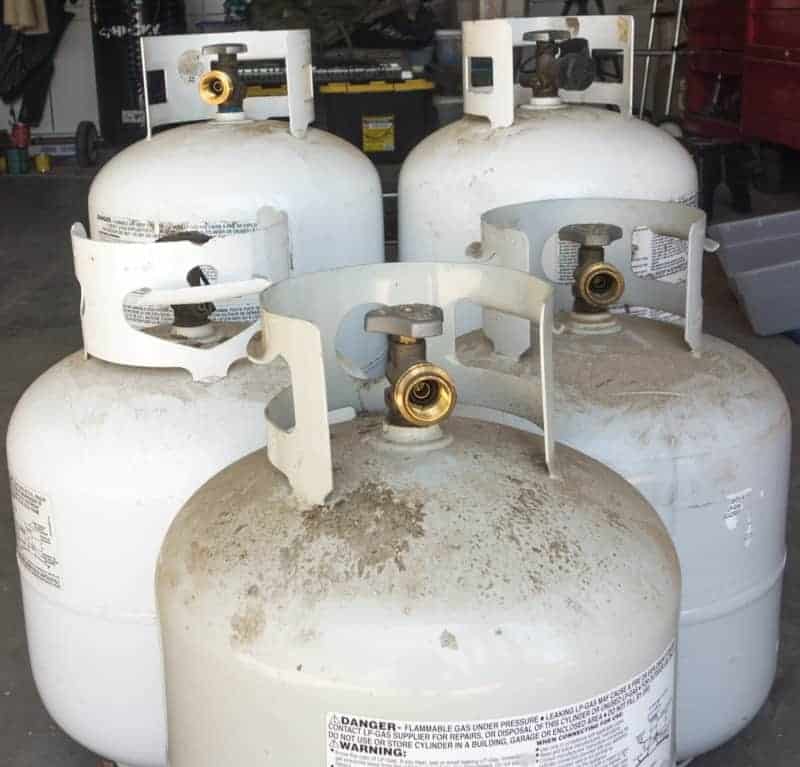
It’s never a bad idea to carry an extra propane tank on your RV or camper. Besides having a backup for your RV appliances, a spare propane tank is helpful if you travel with a grill or portable fire pit.
You can easily run your fire pit or grill without disconnecting the propane from the camper. If your RV has an ASME tank, an extra 20-pound tank is necessary for grilling or hooking up your propane fire pit if you don’t have an installed quick-connect line.
Is it OK to Drive an RV with the Propane On?
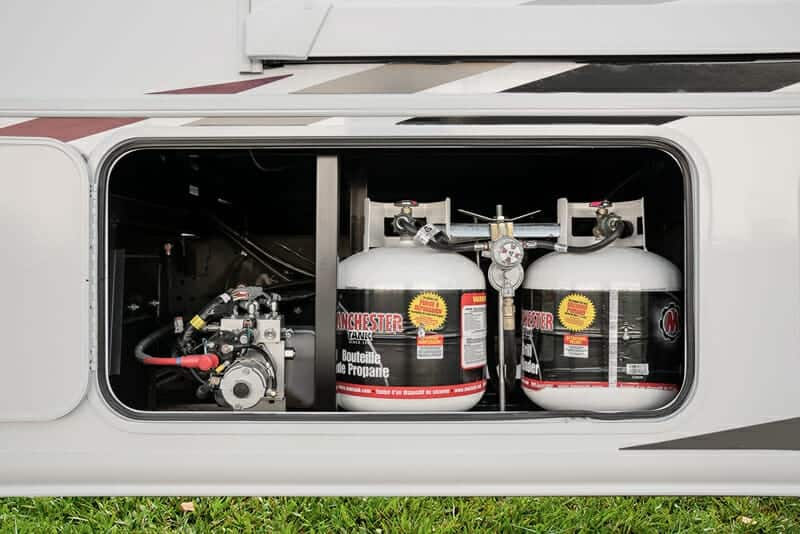
This is an important question and one that doesn’t have a simple answer. Our best answer is that you need to research what is legal in the place you live and the places where you’ll be traveling. Each state has different regulations about your propane tank being on while traveling.
One thing that’s consistent is that it’s illegal to travel through tunnels or over some bridges with a propane tank. This means you’ll need to make your travel plans carefully. We suggest using a travel planning app to make this task easy. Check out RV Life Trip Wizard and ToGo RV; these apps help you plan your next road trip.
We recommend leaving it off if you ever wonder whether you should travel while your propane tank is on. Besides eliminating the question about legality, turning your propane tank off just makes traveling safer. If you want more information on this subject, we took a deeper dive that you’ll want to check out.
4 Tips for Safely Traveling with RV Propane Tanks
Before you hit the road with your RV and its propane tank, we’d like to offer a few tips for safe traveling.
1. Add a Propane Tank Gauge
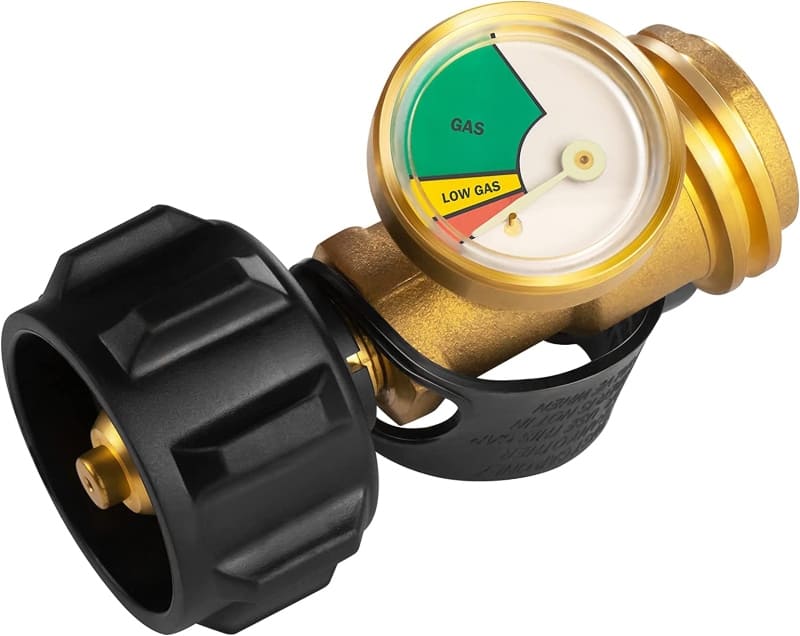
A propane tank gauge is an inexpensive tool to help you keep track of how much propane is left in your tank. They can also be helpful in letting you know if your propane system has a leak.
Propane tank gauges are simple to install on your RV or camper if it doesn’t already have one. They simply connect between the tank and your connector hose. Once installed, the gauge is easy to read and lets you quickly know if it’s time to have your tank filled or replaced.
2. Use an RV Propane Regulator
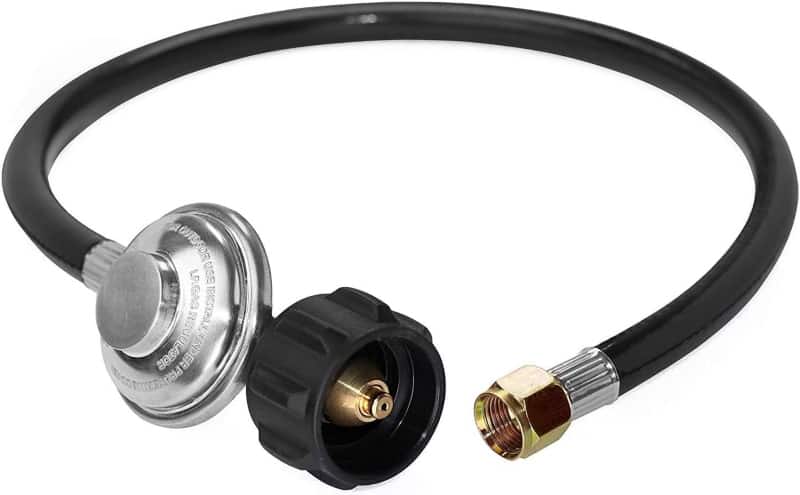
You don’t want to connect a propane tank to your RV or camper with just any old hose. First, not all hoses are made for gas. But more importantly, a hose without a regulator can cause issues within your RV or camper.
Propane regulators manage the flow and pressure of the propane that’s passing from the tank to your RV’s propane delivery system. Consistent pressure and flow will keep your RV appliances running smoothly. Propane regulators are also a good safety feature for your RV or camper by eliminating the potential for leaks.
3. Invest in a Propane Tank Cover
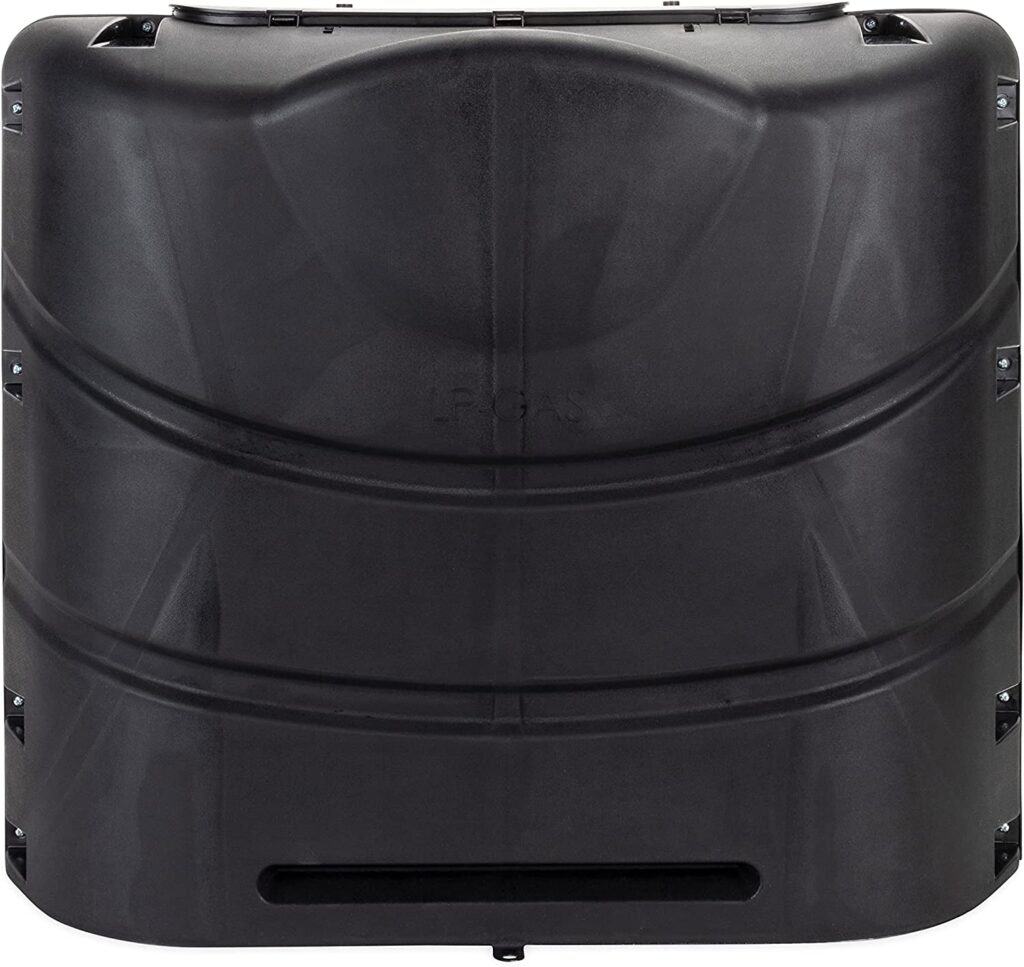
Some travel trailers don’t come with a cover for the propane tanks. While this isn’t illegal, it isn’t a great idea.
Propane tank covers protect your propane tanks from debris on the road, the weather, and other damage that may occur during travel. If your travel trailer or camper didn’t come with a propane tank cover, it’s worth buying one. Propane tank covers are inexpensive and easy to install.
3. Always Drive with Propane Off
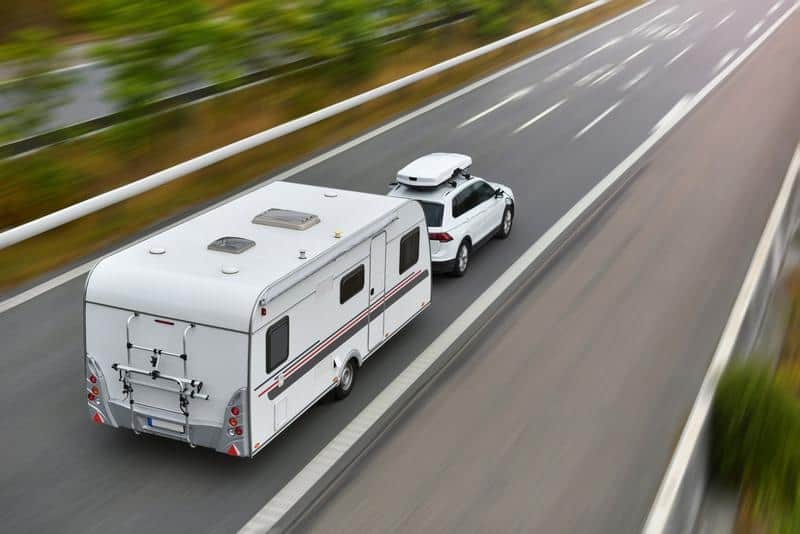
The safest traveling condition is to turn off your propane tank. Propane is highly flammable and can catch fire easily. There’s always the possibility that your RV or camper will be damaged during travel. Keeping your propane tanks off protects you and your RV from even more damage if you’re involved in an accident.
4. Regularly Inspect and Maintain Your Tanks
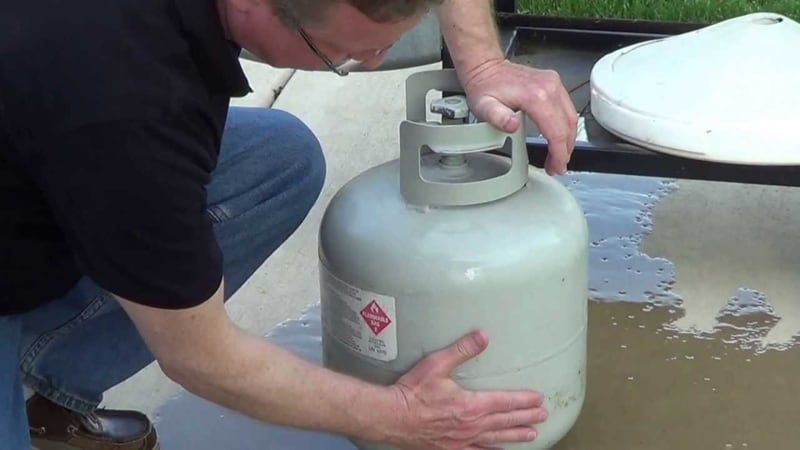
Propane tanks are made of metal; over time, this metal can start to wear, becoming weak. The best way to avoid issues that come with older RV propane tanks is to inspect them. A good rule of thumb is to check your propane tank at least monthly. This is particularly important for ASME tanks that you don’t have to remove to fill.
Final Thoughts on RV Propane Tank Sizes
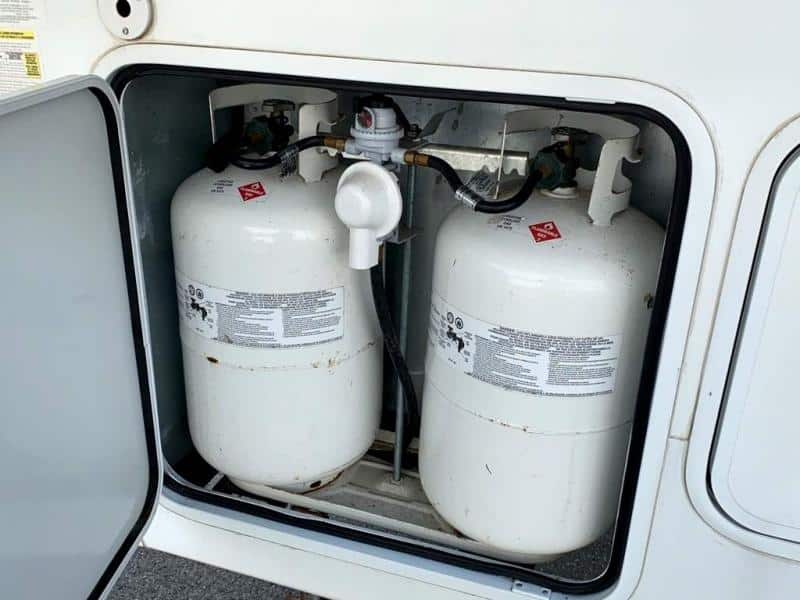
The proper RV propane tank size for your RV or camper can make traveling more enjoyable. The right RV propane tank can power your heating and cooling appliances for numerous days.
However, if you don’t size your propane tank correctly, you may stop for a refill more than you’d like.
When you doubt the right RV propane tank size, consult your owner’s manual or call your local RV dealer. They can help you find the right size tank with the proper connections to make traveling with your RV fun and comfortable.
About the Author:
Jason Gass is a full-time freelance writer and part-time RVer whose goal is to share great stories around a campfire with good friends.
When he’s not working, he spends most of his time camping, searching for the best breweries, and road-tripping in his teardrop trailer with his wife, daughter, and two dogs.


